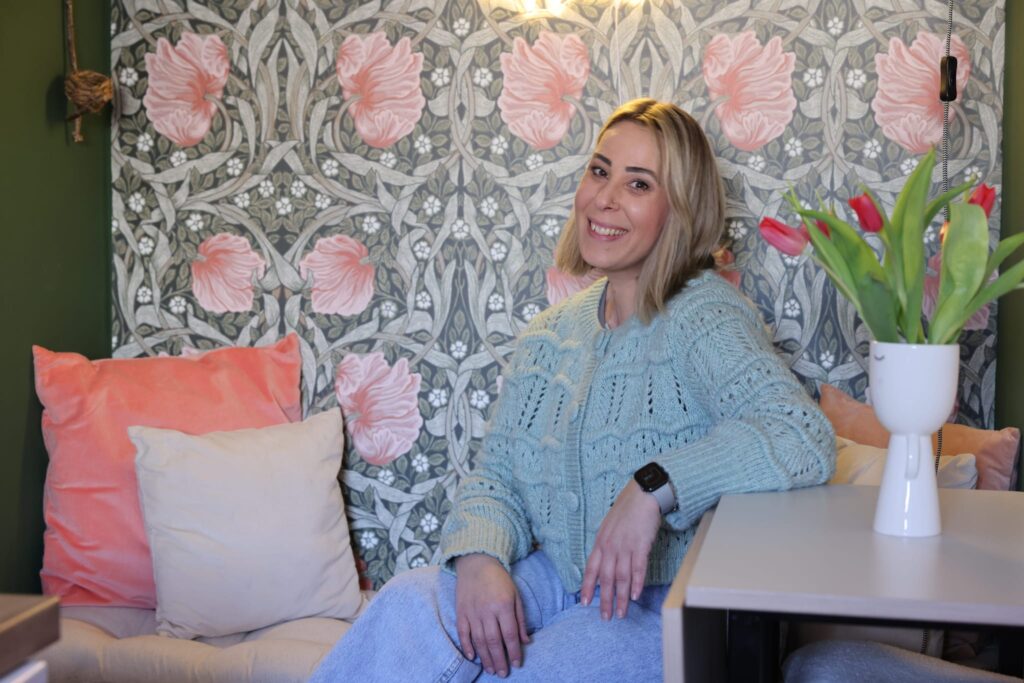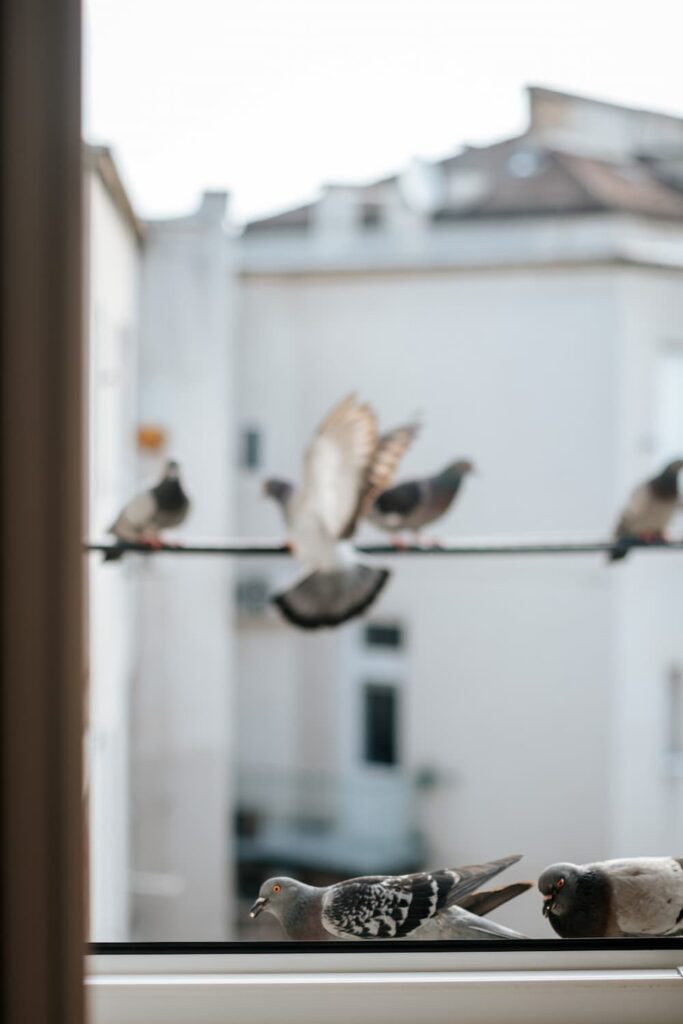For a long time, this apartment was our home. Always warm and comfortable, it was so cozy and inviting that our friends used to fall asleep on the couch. Those moments are some of my favorite memories and the inspiration behind the name. You will feel like in a nest—comfortable, safe, and restful.
I have always considered the spaces we live in to be alive, the extension of our emotions, dreams, personality, and the carousel of life. Those fine vibrations are weaved into the walls—which is why somewhere we feel good or we feel those uncomfortable goosebumps.
When I travel to another city or state, I want to be truly immersed in that community for the few days I am there. I observe and imagine everyday life, I want to blend in to feel those connections that create daily life the best I can. My wish for you is to experience the life of us “Purgeri”, as we like to call ourselves, even for only one day. Our street, Ulica Kneza Mislava, is the best location in town—just wait until you get out of the building and see the famous “mosque”, as Ivan Mestrovic Pavilion is often referred to—it’s the perfect place to start the day. This part of the city is known as “Little Berlin”, creating the artisans’; mecca with Martićeva and Tomaševićeva street.
There is a magical bench waiting for you in the kitchen. Except for being comfortable to sit or read, this bench got famous for its “magical powers”, as described by my friends. It is a corner where we would laugh until weeping, and cry our eyes out, too. Whether we said what was bothering us or our wishes out loud, there would be a change in our everyday lives soon after. Pure luck or cosmic magic—can’t tell. But I do sincerely hope that the bench will give you what is best for you. Don’t forget to take a selfie under the neon sign—for good luck!


The most difficult thing in the world is to reveal yourself to others in your true colors.
I feel the world, this thin line that connects us all much more than we can see, that’s why the only way I want to build this business is the way that I live—with kindness.
When I decided to rent out this apartment, I knew that it had to be something different, something for the higher good of all, something truly special.
One thing about me is sure — I always follow my passion!
Passion is what pushed me to write the book Zeleni život vege mama (The Green Life of Veggie Moms)—a little “bible” about nutrition and plant-based diet that helped many. The book is written in simple, fun language, and besides the rich knowledge, it also offers plenty of practical tips for the whole family. Learn more.
Passion is what pushed me to participate in many environmental projects. I worked in the UNDP Energy Efficiency Department for five years, also volunteering and helping people, animals, and our Planet.
But my biggest passion is my family: my precious daughter Milli, my husband Darko, and our two adorable rescued Poodles Coco and Woody.
On a more formal note, I have a degree in Economics, majoring in Tourism, Public Relations, and Marketing. None of those were much fun for me until I changed how I eat, think, live, and travel. I started to follow many great speakers that do a lot for saving this world, and that was my turning point—knowing my business and experience can help our Planet.


One of Zagrebs’ trademarks are our famous pigeons, our local oldschool name for them is Taubek. They live in all parts of the city. My local council colleagues and I are on the mission to improve the wellbeing of all birds in the city. We are working on a plan to install feeders and waterers in our beautiful public parks.
Yes, cozinesT apartment has a crew of its own … mama bird came to our window a few years ago, so we started to feed her and baby with some sunflower seeds and barley (only seed no old bread). They recognize me even if they don’t see me for a while.
We have a protective net installed on the kitchen window so you can only watch them if you don’t want to interact.
Fun facts:
Nikola Tesla (born in Croatia) was a great man who enjoyed pigeons. He used to care for injured wild pigeons in his New York City hotel room. Hands down, Tesla’s favorite was a white female—about whom he once said, “I loved that pigeon, I loved her as a man loves a woman and she loved me. When she was ill, I knew and understood; she came to my room and I stayed beside her for days. I nursed her back to health. That pigeon was the joy of my life. If she needed me, nothing else mattered. As long as I had her, there was a purpose in my life.” Reportedly, he was inconsolable after she died.
Pigeon-breeding was a common hobby in Victorian England for everyone from well-off businessmen to average Joes, leading to some fantastically weird birds. Few hobbyists had more enthusiasm for the breeding process than Charles Darwin, who owned a diverse flock, joined London pigeon clubs, and hobnobbed with famous breeders. Darwin’s passion for the birds influenced his 1868 book The Variation of Animals and Plants Under Domestication, which has not one but two chapters about pigeons (dogs and cats share a single chapter).
The common city pigeon (Columba livia), also known as the rock pigeon, might be the first bird humankind ever domesticated. You can see them in art dating back as far as 4500 BCE in modern Iraq, and they’ve been a valuable source of food for thousands of years.
In a 2017 Current Biology study, researchers showed captive pigeons a series of digital lines on a computer screen for either two or eight seconds. Some lines were short, measuring about 2.3 inches across; others were four times longer. The pigeons were trained to evaluate either the length of the line or how long it was displayed. They found that the more time a line was displayed, the longer in length the pigeon judged it to be. The reverse was true too: If the pigeons encountered a longer line, they thought it existed in time for a greater duration. Pigeons, the scientists concluded, understand the concepts of both time and space; the researchers noted “similar results have been found with humans and other primates.”
It’s thought that humans process those concepts with a brain region called the parietal cortex; pigeon brains lack that cortex, so they must have a different way of judging space and time.
Their navigational skills also make pigeons great long-distance messengers. Sports fans in ancient Greece are said to have used trained pigeons to carry the results of the Ancient Olympics. Further east, Genghis Khan stayed in touch with his allies and enemies alike through a pigeon-based postal network.
Pigeons’ homing talents continued to shape history during the 20th century. In both World Wars, rival nations had huge flocks of pigeon messengers. (America alone had 200,000 at its disposal in WWII.) By delivering critical updates, the avians saved thousands of human lives. One racing bird named Cher Ami completed a mission that led to the rescue of 194 stranded U.S. soldiers on October 4, 1918.